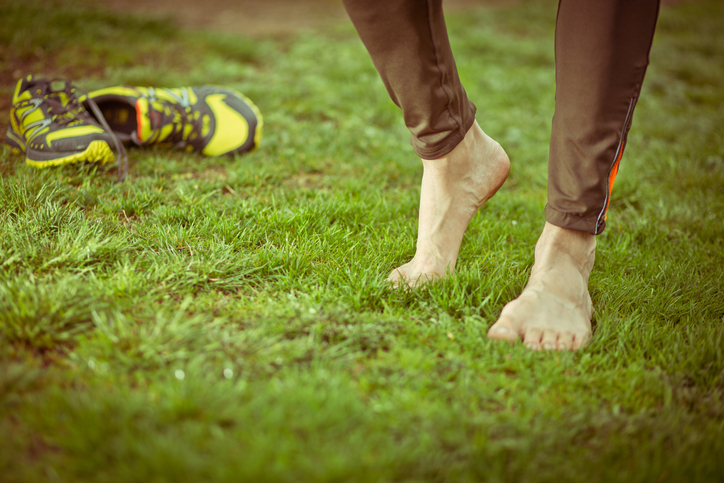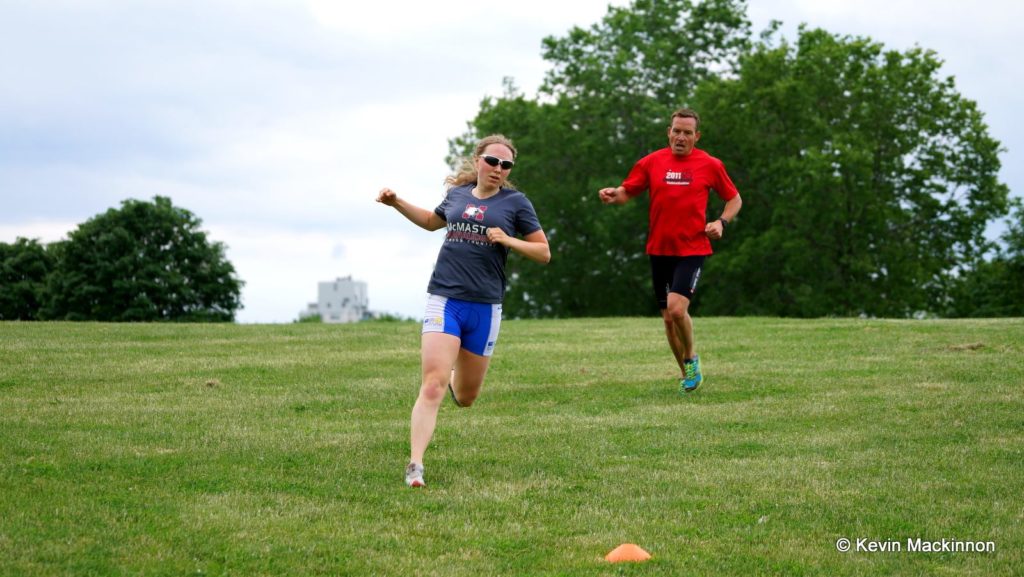What role barefoot running plays in training
Barefoot running and foot-specific exercises can improve technique and stability

Remember the barefoot running fad? In the late 2000s, runners around the world began reaching for toe “shoes” and making the transition from large clunky shoes to minimalist shoes like Vibrams. But, just as quick as the fad came, it disappeared. Despite the reasonable rationale for running barefoot – “we were made to” – people got hurt because of the sudden change. Then came the evolution of Hoka One One-like shoes, ones that cushion your stride and actually position your foot correctly – rolling through the ground contact phase of running.
Now, more and more athletes are including different types of barefoot running and foot-specific exercises to improve their technique and stability. Recently, Sebastian Kienle posted a YouTube video explaining his return to training following a broken collarbone. He and his coach explained different drills and approaches they were taking. Interestingly, Kienle and his coach highlighted their incorporation of running barefoot to his training.
“We started barefoot running – the most natural approach of running as possible. And we built up the run with a super technical focus (with barefoot drills) on the grass. From this technical approach, we start to get more volume and add in other drills followed by putting on the shoes keeping technical focus.”
It is safe to say that the evolution of the running shoe has grown exponentially. Nike, Saucony, Asics, New Balance, Hoka One One… all have come out with more advanced shoes using carbon plates, meta rocker technology and balancing comfort with performance. Yet the value of doing running drills and foot-specific drills barefoot is immense.
In a review published in the British Medical Journal (2020), researchers investigated the impact running in shoes has on our feet. Essentially, while the developments in shoes have led to performance improvements, it appears that it has also led to a weakening of our foot muscles and arches. Thus increasing the risk of foot injuries and chronic issues.
Related: VIDEO: must-do winter running strength exercises
However, the study, as well as numerous coaches and sports physicians, caution people with how they incorporate barefoot running and drills.
The transition towards barefoot activities in daily life, especially barefoot running, needs to be managed carefully in adults who have spent most of their lives shod. Slowly increasing time spent barefoot and on variable surfaces may provide a suitable introduction to barefoot training for previously shod individuals. In this way, adults may be able to restore innate impact moderating mechanisms, associated with their evolutionary legacy, without muscle-tendon strain. — “From barefoot hunter-gathering to shod pavement pounding. Where to from here? A narrative review” by Peter Francis and Grant Schofield
If you are looking to begin barefoot running or doing more activities/drills barefoot here are a few tips and progressions to follow.
- Begin doing foot strengthening exercises. Here are a series of exercises from Canadian Running Magazine that you can do barefoot pre-workout to make sure your feet and calves are ready for a workout or long run.
- Walk around, standing on tip toes and walking on heels. Get comfortable with the impact between foot and ground, and how your body adapts.
- Walk, jog and run in sections along a soft terrain. For example on a grass or turf field.
- Do warm-up or cool-down drills barefoot. This works ideally at a track, or inside before you go out for a run (it may be getting chilly to go outside barefoot).
- If you do consider running barefoot, this should be a show and methodical progression. However, it is worth mentioning that barefoot running is not for all, but it can be a useful approach to work on technique and injury prevention.

